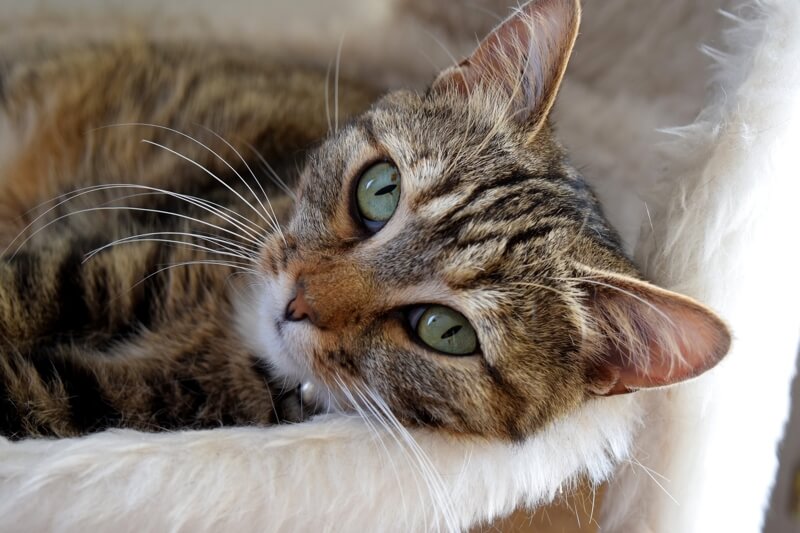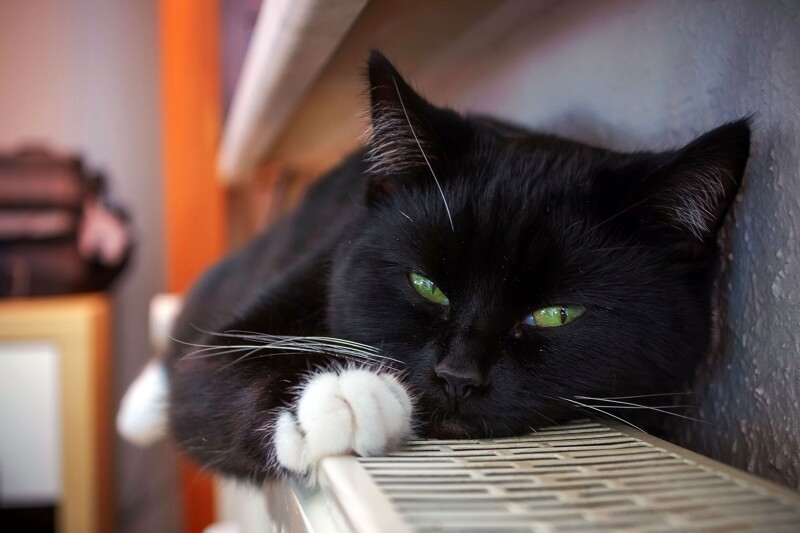What Is Intervertebral Disc Disease in Cats?
IVDD in cats is relatively rare, but it’s a serious condition that can cause paralysis.
The incidence of cancer in cats is said to be nearly half that of their canine compatriots. But that doesn’t mean friends of felines should breathe a big sigh of relief. Cats are good at hiding symptoms, and it can be hard to recognize signs of cancer. That makes them hard to diagnose in the early stages of the disease. So when veterinarians are able to diagnose cancer, it’s often in the late stages, and requires serious treatment.
The Feline Leukemia Virus (FeLV) is a unique concern for kitties. Our strategic partner the American Society for the Prevention of Cruelty to Animals® (ASPCA®) notes that FeLV is one of the most common causes of illness and death in house cats. The virus can severely depress a cat’s immune system, leading to an aggressive form of cancer called lymphosarcoma.
FeLV is transmissible through bodily fluids and is often contracted through shared food and water bowls, and by direct contact with other infected cats. The ASPCA® suggests that all cat owners should test their fuzzy friend for FeLV and take advantage of a vaccine that helps protect their pet from infection.

There are three common types of cancer that affect our feline companions. Unlike dogs, they do not tend to affect certain breeds more than others.
This form of cancer in cats is usually associated with FeLV infection. Some estimates suggest that LMS accounts for more than a quarter of feline cancer diagnoses.
The gastrointestinal version, which is the most common form of LMS and not linked to FeLV, can create a large mass in the stomach. While LMS is not curable, most cats do respond well to treatment.
White cats are most prone to developing skin tumors, but they can occur in any cat. The ears are particularly sensitive to this kind of cancer, appearing as a visible lump on the skin. If it occurs on the nose or eyelids, it can mainly affect your pet’s ability to smell or see.
Just as humans can develop breast cancer, cats can develop tumors on their mammary glands. This tumor presents itself as a lump in the tissue around your cat’s nipple, which may look swollen and be accompanied by a yellowish discharge.

Professionals note that early diagnosis is key to the most successful management of cancer in cats. With careful observation of your whiskered buddy, you may be able to spot issues that wouldn’t necessarily be recognized as symptoms of sickness by a casual observer.
Remember that you know your cat better than anyone. If you spot any abnormalities that you find concerning, there’s no harm in calling your veterinarian. Get in touch with them right away if you see any of the following:
1. Skin/Fur Changes
Unless you have a shorthaired (or hairless) cat, it can be difficult to spot skin changes. That said, places where the skin is more apparent, like the ears and the top of the nose, can be good places to check for abnormalities like sores that don’t heal or scaly and red patches.
Even if eyes can’t catch these changes, your hands can sense them during those quiet cuddling times. Pay attention to your cat’s coat as well. Abnormal roughness or coarseness can be a sign that something’s wrong.
2. Lumps/Swelling
There could be more than one reason why a lump is present. It’s also possible a lump could be confused with matted fur on longhaired cats. So kitty parents should err on the side of caution, particularly if there are signs of pain or swelling.
3. Digestive Issues
A cat that is having trouble reaching their litter box in order to use the bathroom may be experiencing more serious health issues than just an upset tummy. That also goes for a kitty who has a loss of appetite, trouble eating or drinking, or weight loss.
4. Bad Breath
Cat breath isn’t often as bad as dog breath, but can be present. Keep your nose open for worse than typical cat breath, which can be a sign of a tumor.
5. Changes in Behavior
A decrease in energy levels can indicate illness. A cat that is hiding more than normal or is unusually inactive could be suffering. When your friend just doesn’t seem to be their normal feline self, it’s time to call the veterinarian.

Veterinarians have a variety of tools at their disposal to diagnose cancer in cats. If you feel a mass or lump on your kitty, your cat’s doc will likely recommend a needle biopsy to take a sample for a pathologist who will make the final diagnosis. In some cases, surgery might be required to remove the entire lump or mass to be sent to the pathologist instead of a small sample.
Other methods of diagnoses may include ultrasound, to see abnormalities in organs or deeper tissues, radiography (commonly called X-rays) or blood tests. Aside from helping detect cancer, these tests may also show if the cancer has spread.
If caught early enough, some cancers can be very well managed or maybe even cured. And there are a variety of treatment options available to veterinarians.
Treatments are costly, but being ready with an ASPCA Pet Health Insurance plan may help lessen your financial woes throughout the whole cancer ordeal – from diagnosis to palliative care, if necessary. Get a free quote for your cat today.
With some good planning, generally both the cost of cancer treatment and the cancer itself can be successfully managed. That was the experience of Charlotte S. of Potsdam, NY, who shared a story about her cat Belle.
"Belle was recently diagnosed with a cancerous tumor in her mouth and had to have all but two teeth extracted. I have submitted four claims so far for Belle and have received my reimbursements within two weeks. I've spoken with representatives a couple times with questions and each time they were courteous and knowledgeable, and they voiced compassion and concern for Belle. My girl is on the road to recovery, and there has been no recurrence of the tumor so far. The small monthly fee is well worth it as I could never have afforded the surgery and aftercare necessary to keep her alive and well. Thank you to the caring folks at the ASPCA Pet Health Insurance program!"

There is some good news for friends of felines everywhere! There are several ways to reduce the risk of cancer in cats.
While all of these things can help prevent cancer, early detection is still very much the key to successfully fighting cancer in cats. And that detection is best accomplished by giving your fuzzy friend the love, petting and cuddles they deserve.
(opens new window)